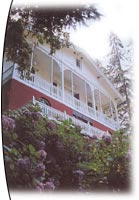Yalova - Atatürk Pavilions
Yalova - Atatürk Pavilions
 As a settlement centre, the Yalova and Termal (Thermal Springs) dates back to fairly old times. In the last periods of the Ottoman Empire, it attracted attention and became the scene of some constructions and restorations in small rate. With the curable natural springs and the green surroundings Yalova and Termal received the admiration of the great leader Atatürk, the founder of the Republic. When he visited Yalova on various occasions, the pavilion in the Baltaci Farm was allotted to him; and later on the pavilion was built in the Millet (Nation) Farm.
As a settlement centre, the Yalova and Termal (Thermal Springs) dates back to fairly old times. In the last periods of the Ottoman Empire, it attracted attention and became the scene of some constructions and restorations in small rate. With the curable natural springs and the green surroundings Yalova and Termal received the admiration of the great leader Atatürk, the founder of the Republic. When he visited Yalova on various occasions, the pavilion in the Baltaci Farm was allotted to him; and later on the pavilion was built in the Millet (Nation) Farm.
The Atatürk pavilion, which the location was chosen by Atatürk and his friends, and appeared within the Atatürk Pavilions Group, is well-known by the completion of the building in a very short time, and having the characteristics of a “Atatürk House”.
The building, which is an early example of the republic period architecture, was built on 1929 and at present time you can still see the original furniture used in those days. The pavilion garden became a famous place where Atatürk conversed with citizens.
 Yalova Atatürk pavilions consist of Atatürk House, Aide’s Pavilion, the general secretariat building and the kitchen. One of the buildings made of wood just besides the Atatürk House was constructed as a rest pavilion in the period of the Sultan Abdülhamid the second (1876-1909) and used as Aide's pavilion in the republic period. The other one is the general secretariat building constructed in the early period of the republic.
Yalova Atatürk pavilions consist of Atatürk House, Aide’s Pavilion, the general secretariat building and the kitchen. One of the buildings made of wood just besides the Atatürk House was constructed as a rest pavilion in the period of the Sultan Abdülhamid the second (1876-1909) and used as Aide's pavilion in the republic period. The other one is the general secretariat building constructed in the early period of the republic.
Due to its historical and environmental values, the Yalova Atatürk Pavilion, that continuously repaired and taken care of and kept open to public, becomes a building with special features. This green area which is quite near to Istanbul will have its importance in the future where its citizens will relax and enjoy the inheritance of the past period in its original atmosphere. Today, a two storey resting facilities for the Turkish Grand National Assembly is constructed in the place of the kitchen, and, in the garden and its environment a cafeteria is serving to the public.